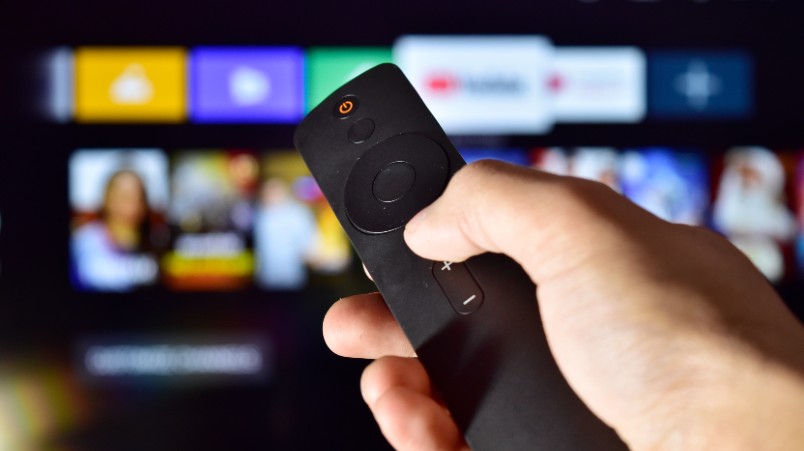BVOD marketplace delayed until 2023 as networks grapple with scope, tech wrangles – TV execs insist project remains live

Australia's main TV networks Nine, Seven and Ten are one step closer to a cross-broadcaster BVOD trading and measurement system.
The bid to wrest back control of BVOD inventory by Australia’s major free to air networks has been pushed back with a 2023 launch now mooted. But Australia's incumbent operators insist that the BVOD project is still alive and kicking after rumours Ten had pulled out. The new timetable could see a start date just as Netflix and Disney+ come to market with ad-funded tiers.
What you need to know:
- 'BVOD marketplace' rumoured to be in doubt after apparent pullout by Ten, though network insists it's still reviewing options.
- Re-scoped project now being thrashed out in a bid to ensure all three major free-to-air networks are onboard.
- New year start-date mooted for VOZ-powered reach and frequency-capped buys as networks try to align TV trading across linear and BVOD.
- Agencies need to be convinced.
Late show?
The bid to wrest back control of BVOD inventory and prices by Australia’s major free to air networks has been pushed back with a 2023 launch now mooted.
Seven, Nine and Ten have been working up a plan to use OzTam IDs as a common identifier to enable targeting and capped frequency buys across all three networks via a programmatic BVOD marketplace in a bid to counter YouTube's might. The aim is to build a more transparent premium video ecosystem in a bid to gain control and visibility of their fastest-growing asset – while simultaneously curtailing the power of adtech platforms.
That approach could also lead to audience reach and price gains. Broadcasters promise a co-viewing figure, or ‘multiplier’ by wrapping household viewers into a single identifier that would only be available through the mooted marketplace and breaking audiences down into segments using the identifier may drive up bids if more advertisers are vying for the same people.
Linear TV is measured with a panel. BVOD is measured with a tag plugged into every player gathering second by second data, while the broadcasters also have log-in data. The BVOD marketplace originally aimed to bring all of that together via an ID that works across broadcasters' inventory, thereby scaling BVOD’s reach and enabling tracking of campaigns as well as frequency capping, with campaign reporting powered by Voz data – but only for inventory bought via the BVOD marketplace.
The plan was to launch mid-2022, in the second or third quarter. But challenges in agreeing the scope of the project between Seven, Nine and Ten have led to delays – with the original timetable viewed as highly ambitious by industry executives.
Sources suggested that Paramount-owned Ten had backed away from the project in July due to influence from its US head office, which has agreements in place with various ad tech platforms spooked by talk of a walled garden. More broadly, adtech players had feared that an OzTam ID may be out of sync with their own IDs, reducing their ability to match up audiences across channels – a key reason for advertisers to push ad dollars into demand-side platforms.
With SBS and Foxtel yet to commit to the scheme, since dubbed 'BVOD Connect', Ten pulling out could have proved terminal, especially with Netflix and Disney+ now preparing to launch locally.
However, Ten insisted that it is still reviewing options – and networks have clarified that the plan is not for a walled garden or single tech provider, but open to all tech players.
The upshot may be that the plan to build a marketplace for BVOD inventory is scaled back closer to its essence – using the OzTam ID to extend reach and enable frequency capped buys, with all of the TV companies copping flak for running repeat ads, and to better align linear and digital TV buying.
'Still on'
Nine's Michael Stephenson told Mi3 that the project was pushing ahead and stated the networks, via OzTam, "will be launching a product in and around VOZ early in 2023." To suggestions that the project scope has been changed, he said that was standard procedure.
"We continually go back to market to check ... are the products we are creating going to deliver against market expectations? With VOZ launching, having products that take advantage of that is important. So we will keep taking feedback… to get maximum uptake."
Seven's Kurt Burnette seconded that statement. "We're proceeding with the BVOD marketplace. We're still doing briefings and working through a solution to trading via VOZ and improving the viewer and ad experience of BVOD," per Burnette. "That was always the objective and that continues."
Nine's Stephenson suggested that OzTam and Australia's major TV networks should be lauded for trying to build a "world first" approach to unifying total TV data and trading.
Agencies: Unconvinced
The problem is that agencies and the broader supply chain remain reluctant. Per one tech industry exec, "I've not had an agency come to me saying 'you need to build this'." Others suggested that buyers do not want to see now-standard industry identifiers removed and replaced with an OzTam ID, because that would curb the ability of DSPs and agencies to identify digital audiences outside of BVOD channels and stitch those audiences together.
"Agencies have all spent years building these products… now you are asking them to unwind those products and competitive advantages… to try and unify the way people buy," said one exec.
As such, some think the networks may have left it late for a BVOD marketplace. However, others believe that there is "still room for OzTam's data to be used in market" to more closely align TV data and buying with BVOD, though not as a single marketplace at the expense of current industry approaches and IDs. "You need both options", per one executive.
"But if you don't have the incumbents aligned, that makes it harder."


